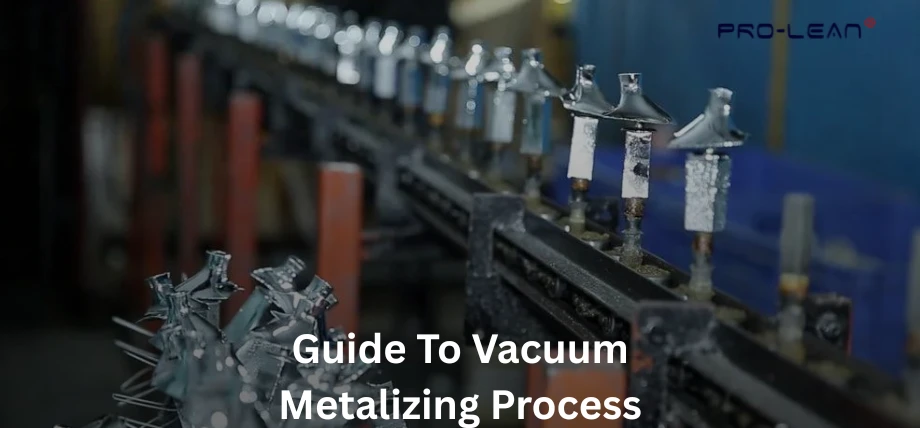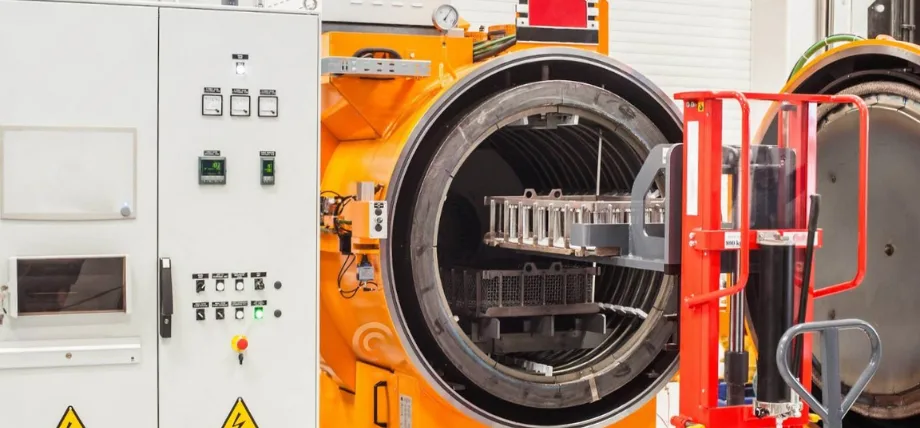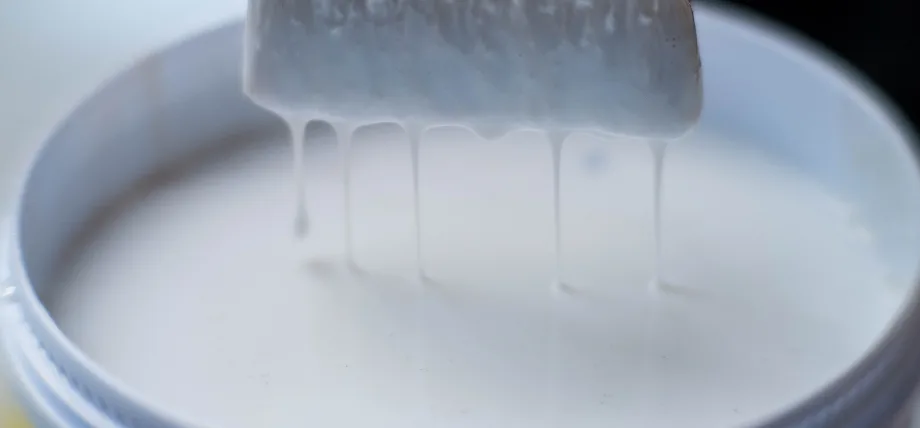
Guide to vacuum metalizing
Vacuum metalizing is the process of coating metal onto a surface by heating the metal material to its vaporization point. The condensation creates a layer of metal on the surface, plating it effectively.
This step-by-step guide will uncover the process of vacuum metalizing, its advantages, and applications.
What is Vacuum Metalizing?
Vacuum metalizing, or vacuum deposition is a specialized form of surface finishing that physically deposits a metal onto a surface in a vacuum chamber. The process typically consists of heating a metal material to vaporization. The vapors condense within the vacuum chamber due to the lack of pressure inside. This creates a layer of condensation on the surface with a thickness ranging from a few nanometers to millimeters.
There are two forms of vacuum metalizing processes:
- Physical Vapor Deposition (PVD): Physical vapor deposition is a vacuum deposition method where the metal vapor is a gas. It applies to semiconductor devices, glass coating, and thin-film solar panels.
- Chemical Vapor Metalizing: Chemical vapor deposition (CVD) uses chemical reaction of vaporized gases to form a vapor on metal that solidifies. It can be further classified into Low-Pressure Chemical Vapor Deposition (LPCVD), Plasma-Enhanced Chemical Vapor Deposition (PECVD), and Plasma-Assisted CVD (PACVD).
Step-by-step Vacuum Metalizing Process
There are six key steps that you need to go through in the vacuum metalizing process:
Surface Preparation
The backbone of any excellent engineering project is proper surface preparation. You need to make sure that there are no risks of contamination during the metalizing process. There are typically strict quality control standards in place for surface treatments. Then, custom fixtures are used to hold your parts steady for the base coating.
Base Coat
With your parts in place, base coating should be applied to yield better, long-lasting results. This primer increases adhesion and abrasion resistance. The base coat process depends on the kind of area requiring coating. Robotic painting works well for high-volume applications, whereas manual work is done on low-volume or one-off projects.
Using Vacuum Chamber
The fixture is then put on a turntable inside a vacuum chamber. This is a closed cell where the metal material, such as aluminum, is fed for evaporation under high vacuum. The temperature inside this chamber varies according to the vapor pressure of the metal considered.

Vacuum chamber
Metal Evaporation
The metal is brought to a boiling point by resistance heating, an electron beam, or plasma heating. The condensation will create vapor that coats the intended surface evenly.
Deposition
The machine holding your fixture in place can be rotated in front of the vapors for even coating. You’ll have greater control over the consistency and thickness you want to maintain in your article.
Protective Coat (Lacquer)
Using a protective coat or lacquer is not a necessary part of this process, but it is crucial in enhancing your end results. It can improve the resistance of the surface to chemicals, moisture, and abrasion, and safeguard against the elements. Tinted or dyed coats can also improve the aesthetics by giving a sophisticated appearance of gold or bronze.

Bucket of lacquer
Advantages of Vacuum Metalizing
There are various reasons why you might want to engage in the vacuum metalizing process. These include:
High-Volume Production
Vacuum metalizing is often more economical, especially for high-volume production, because of lower material costs and faster processing times. The use of advanced technology, like robotic arms for painting, speeds up the process. The initial cost may be high, but it is quickly offset with massive return.
Electrical Conductivity
Surfaces that have been vacuum-metalized have high electrical conductivity. They can influence incoming frequencies to avoid any impact on functions. This coating will also be fairly corrosion and abrasion resistant. You can expect your vacuum metalized components or devices to last for several years with limited electromagnetic interference (EMI).
Corrosion Resistance
Coating metals that rust easily with vacuum metalizing can add an extra layer of protection against UV damage, wear and tear, and corrosion. Your parts will have higher durability and not break as easily during usage. Even weaker substrates like plastics can be coated with a metal layer to enhance durability.
Thin Coating
Vacuum metalizing can allow for thin coatings on lighter substrates like plastics. This thickness can go down to an atom’s measurement. You’ll have a solid advantage in terms of weight and flexibility of the final polished product.

Precision threads
Customizable
The vacuum metalizing process can be used to create specific designs and finishes. You can create highly reflective and visually appealing layers on nearly any size of metallic surface. Your choices of metal and texture will depend on the usage and required appearance of the metalized component.
Applications of Vacuum Metalizing
Vacuum metalizing has countless applications across various industries:
- Automotives: Vacuum metalizing can be used in the automotive industry for parts in vehicles, including headlight reflectors, interior trims, and exterior appearances. The coating from this method is long-lasting and boosts the aesthetic of the vehicle.
- Electronics: This method is also applied in the electronics sector, such as for coating copper interconnects on silicon for semiconductors. The extra coat improves conductivity and guards against corrosion.
- Decor: The aesthetics of vacuum metalizing make it an ideal option for decorative items, such as mirrors, toys, lamps, and home appliances. These films can be dyed or coated in specific colors, such as gold and silver wire.
- Consumer Goods: Food, drugs, and cosmetics packaging often uses vacuum metalizing for a metallic finish. It provides an effective barrier against UV and wear and tear, increasing the shelf life of the product. You’ll often find perfumes and cell phone cases made from the process of vacuum metalizing.
- Insulation: Films coated with Physical Vapor Deposition (PVD) have improved thermal reflectivity and electromagnetic radiation shielding for insulation applications. For example, insulation is used for spacecraft in the form of layers of polyimide film that have undergone the film metalization process. This improves their ability to reflect and conduct electromagnetic waves to stay safe from EMI.
Conclusion
Vacuum metalizing is a widely used process that plates metal onto a surface in the contained environment of a vacuum chamber. Ever since it was developed in the 1930s, it has been used routinely in various applications, such as automotives, consumer goods, insulation, and more. The corrosion resistance, durability, cost-effectiveness, and versatility of this process have made vacuum metalizing an ideal method of coating.
This guide has equipped you with the basics of this process, its benefits, and how it can be used in numerous industries.
Precision Vacuum Metalizing Finish For Your Parts
Prolea-tech offers precision surface finishing services for small and large metal parts. We boast a host of finishing options from brushing to coatings and electroplating.
FAQ
- Is vacuum metalizing expensive?
Vacuum metalization is a lot more cost-effective compared to other coating techniques, such as electroplating. It requires less material and energy. This makes it more suitable for large-scale production as well.
- What materials are used in vacuum metalization?
Aluminum, copper, and silver have good electrical conductivity. This makes them the ideal materials to be used in vacuum metalization. However, silver is expensive and copper is prone to oxidation and corrosion. Aluminum is both cost-effective and has high resistance to corrosion, making it the perfect material to be used in the metalization process.
- How does vacuum casting metal work?
Vacuum casting starts by creating a mold and pouring in liquid resins or polymers. You use a vacuum to remove the air from the mold and help the material morph into the desired shape. This process is distinct from vacuum metalizing and is primarily used for plastics.
- Is vacuum plating durable?
Yes. Vacuum plating provides a protective barrier against UV damage, wear and tear, and corrosion. This makes it incredibly durable and creates longer-lasting items.




vacuum metallization is clear in my head. I would be helpful if you further published the followed up article on the vacuum metallization of plastics
Great ! we will surely publish the followed up article on the vacuum metallization of plastics.
Clear illustration and reporting. The inclusion of practical examples and comparisons with other methods makes it an invaluable resource for professionals and enthusiasts alike. Great job!
Simple and clear illustration, it really helped me to understand the STEP file viewer.
Agree! It is very simple to understand the STEP concep